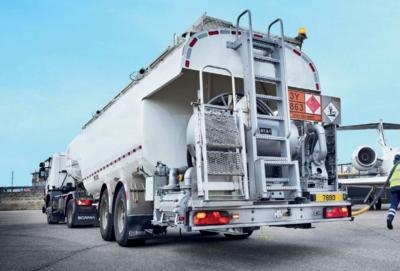Tue, Jan 31, 2023
Sustainable Fuel Production Insufficient to Meet Government Goals by 2030
The NASA administrator has affirmed the Biden admin's support for sustainable aviation fuel, announcing a partnership with Boeing to create a single-aisle, SAF-powered aircraft.

The Biden office has set a goal for the US to produce enough SAF to meet 100% of domestic jetA demand by 2050, when emissions from the industry are projected to make up a sizable proportion of the country's carbon emissions after decades of decarbonization in other sectors. Congress aimed to bolster SAF production in its 2022 package with a tax credit of $1.25 per gallon for jet fuel blended with a percentage of SAF, a step in the direction that will likely evolve over time to omit virgin petroleum as a feedstock altogether. The legislation also included $68 million in the fiscal 2023 government spending law to support carbon reduction efforts in the aviation industry, like provisions directing federal agencies to prioritize SAF research and development.
The boom in SAF production has continued to be outpaced now that legislators have begun to pay more attention to it, however. While companies from around the world have ramped up output of sustainable jet fuel, overall production remains somewhat niche and limited in availability, with an average of only 4.5 million gallons produced per year (2021). In order to meet White House goals, that number needs to climb to at least 3 billion gallons over the next 7 years. Take up also needs to improve, as Congress has attempted to solve with its foray into subsidies. Currently, awareness and availability are still low throughout the aviation industry, giving time for manufacturers to test their engines and aircraft on blended SAF and approve the combinations before widespread rollout.
SAF tends to sit at a pretty steep price point compared to standard jetA, like today's average of $9.30/gal SAF to $6.96 jetA in California. Sustainability and eco-friendliness are nice, but most Cost-conscious operators won't spring for an extra $2.34 a gallon for the warm fuzzies alone. Only economies of scale can bring that price down to reach, barring some full-on legal strong arming to strangle kerosene fuels out of the market, however unlikely.
“The lack of sufficient supply [of SAF] is the biggest issue right now,” said Geoff Cooper, president of the Renewable Fuels Association. “There’s some stuff being produced, but it’s a very small volume, and until we get more production facilities up and running, the cost is going to be high.”
More News
From 2023 (YouTube Edition): "Ain’t Your Daddy’s Super Cub”—Don Wade Co-owned by Don and Ron Wade—the former of Don’s Dream Machines, a storied >[...]
Pilot-Rated Passenger Reported That The Pilot Did Not Adequately “Round Out” The Landing Flare And The Airplane Bounced And Yawed To The Right Analysis: The pilot state>[...]
Dead Reckoning Dead reckoning, as applied to flying, is the navigation of an airplane solely by means of computations based on airspeed, course, heading, wind direction, and speed,>[...]
Aero Linx: Lake Amphibian Club This website is created and sponsored by the Lake Amphibian Club, to help spread the word about these wonderful, versatile amphibians that can land j>[...]
“I am deeply honored to be sworn in as NASA administrator. NASA’s mission is as imperative and urgent as ever — to push the boundaries of human exploration, ignit>[...]
 Classic Aero-TV: In Praise of Alabamas Patriot Aircraft USA
Classic Aero-TV: In Praise of Alabamas Patriot Aircraft USA NTSB Final Report: Cirrus Design Corp SR22
NTSB Final Report: Cirrus Design Corp SR22 ANN's Daily Aero-Term (12.21.25): Dead Reckoning
ANN's Daily Aero-Term (12.21.25): Dead Reckoning ANN's Daily Aero-Linx (12.21.25)
ANN's Daily Aero-Linx (12.21.25) Aero-News: Quote of the Day (12.21.25)
Aero-News: Quote of the Day (12.21.25)



